How do I keep the pool vacuum hose from tangling? To prevent tangling, store the pool vacuum hose neatly on a dedicated reel or hanger. When not in use, avoid coiling the hose tightly, as this can create stress points and encourage kinking. After each use, rinse the hose thoroughly to remove debris that can contribute to entanglement.
Understanding Why Your Pool Vac Hose Gets Tangled
Understanding why your pool vacuum hose gets tangled involves considering several factors, including hose length, the placement of swivels and floats, the pool’s shape, and the type of pool cleaner being used.
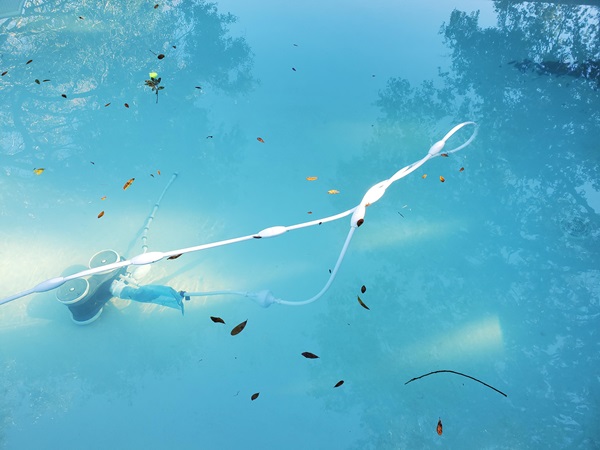
How Hose Length Influences Tangling?
Longer hoses are more prone to tangling due to their increased flexibility and potential for looping or coiling. When the pool cleaner moves around the pool, the excess length of hose can twist and tangle on itself, especially if there are obstacles or irregularities in the pool’s shape.
Shorter hoses are less likely to tangle but may restrict the range of movement for the pool cleaner, requiring more frequent repositioning to cover the entire pool surface.
Impact of Swivel and Float Placement on Hose
Swivels and floats are designed to prevent tangling and improve the maneuverability of the pool vacuum hose. Swivels allow the hose to rotate freely as the pool cleaner moves, reducing the likelihood of kinks and tangles.
Floats help keep the hose buoyant and prevent it from sinking or dragging along the pool floor, reducing friction and tangling. Proper placement of swivels and floats along the length of the hose is crucial for optimal performance and minimal tangling.
The Role of Pool Shape and Pool Cleaner Type
The shape and layout of the pool can affect the likelihood of the hose tangling. Pools with irregular shapes, sharp corners, or obstacles such as steps or ladders may pose challenges for pool cleaners and increase the risk of tangling.
Certain types of pool cleaners are more prone to tangling than others. For example, suction-side cleaners that rely on the pool’s filtration system may be more susceptible to hose tangling due to their dependence on water flow and hose movement.
Top Fixes for a Tangled Pool Cleaner Hose
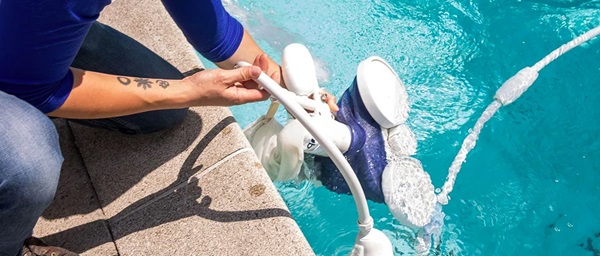
Adjusting the Hose Length for Your Swimming Pool
Determine the optimal hose length needed to cover your pool without excess slack or coiling. Measure the distance from the skimmer or dedicated suction line to the farthest point in your pool and adjust the hose accordingly.
Avoid using a hose that is too long, as excessive length can increase the risk of tangling. If your hose is too long, consider trimming it to the appropriate length using a hose cutter or utility knife.
Optimal Placement of Floats and Swivels
Ensure that floats are evenly spaced along the length of the hose to provide buoyancy and prevent sinking or dragging on the pool floor. Floats should be positioned strategically to maintain a consistent depth and prevent the hose from tangling.
Swivels should be installed at key points along the hose to allow for smooth rotation and prevent kinks or twists. Properly positioned swivels minimize resistance and improve the maneuverability of the pool cleaner.
When to Replace Your Pool Hose?
Inspect your pool hose regularly for signs of wear, damage, or deterioration, such as cracks, splits, or bulges. These issues can compromise the integrity of the hose and increase the risk of it tangling or leaking.
If you notice any visible damage or if the hose becomes stiff or brittle, it may be time to replace it. Over time, exposure to sunlight, pool chemicals, and wear from regular use can degrade the material of the hose, necessitating replacement.
Additionally, if attempts to untangle the hose are unsuccessful or if tangling occurs frequently despite adjustments to length and placement, it may indicate that the hose has reached the end of its lifespan and should be replaced.
Choosing the Right Pool Cleaner to Avoid Hose Tangling
Hose tangles can be a frustrating foe during pool cleaning. But fear not, for the right pool cleaner can be your secret weapon in this battle! Choosing the right pool cleaner is essential for avoiding hose tangling.

Comparing Suction vs. Pressure Pool Cleaners
Suction-Side Pool Cleaners:
- Function: These cleaners rely on the suction power of your pool’s filtration system to move around the pool and collect debris. They typically attach to the skimmer or dedicated suction line and use the pool’s pump to create suction.
- Tangling Risk: Suction-side pool cleaners are more prone to hose tangling as they rely on a flexible hose connected to the pool’s suction inlet. The hose can twist and tangle as the cleaner moves around the pool, especially in larger or irregularly shaped pools.
Pressure-Side Pool Cleaners:
- Function: These cleaners use the pressure generated by a separate booster pump or the pool’s return jets to propel the cleaner around the pool. They feature a larger, stiffer hose that is less likely to tangle compared to suction-side cleaners.
- Tangling Risk: Pressure-side pool cleaners are generally less prone to hose tangling due to their stiffer hose design and propulsion system. They typically use a tail hose with floats to keep the hose buoyant and prevent tangling.
The Benefits of Robotic Pool Cleaners in Preventing Tangles
Robotic pool cleaners operate independently of your pool’s filtration system, using their built-in motors and cleaning mechanisms to navigate and clean the pool. They are equipped with long power cords instead of hoses, eliminating the risk of hose tangling altogether.
Tangling Risk: Robotic pool cleaners are virtually immune to hose tangling since they do not use hoses to move around the pool. Instead, they use tracks, wheels, or brushes to navigate the pool surface while the power cord remains stationary.
Here’s a table summarizing the key points:
| Feature | Suction Cleaner | Pressure Cleaner | Robotic Cleaner |
| Cleaning Method | Relies on the pool’s filtration system | Uses a dedicated pump or booster pump | Internal filtration system |
| Hose Length | Longer (more prone to tangles) | Shorter (less prone to tangles) | No hose (eliminates tangles) |
| Tangle Risk | Higher | Lower | None |
Why a Polaris Pressure-Side Pool Cleaner Might Be Your Best Bet?
Polaris pressure-side pool cleaners, such as the Polaris 280 or Polaris 360, are known for their powerful cleaning performance and reliability. They use the pressure generated by a booster pump or the pool’s return jets to propel the cleaner around the pool.
- Polaris: A Strong Contender: Polaris is a renowned brand known for its pressure-side pool cleaners. These cleaners offer the benefits of:
- Shorter Hoses: As mentioned earlier, pressure-side cleaners use shorter hoses, reducing the risk of tangles.
- Efficient Cleaning: The pressurized water stream ensures powerful suction and effective debris pick-up.
- Variety of Models: Polaris offers various pressure-side cleaner models to suit different pool sizes and budget needs.
In summary, when choosing a pool cleaner to avoid hose tangling, consider opting for a pressure-side pool cleaner like a Polaris model. These cleaners feature stiffer hoses and are less prone to tangling compared to suction-side cleaners. Alternatively, robotic pool cleaners offer a tangle-free cleaning solution and are an excellent option for hassle-free pool maintenance.
How to Properly Store and Care for Your Pool Vacuum Hose?
Properly storing and caring for your pool vacuum hose is crucial to prevent hose memory and avoid future tangles.
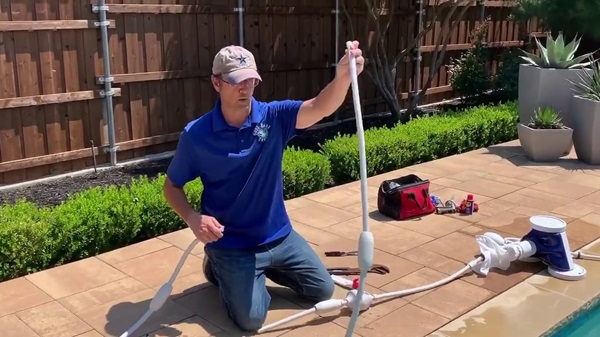
Preventing Hose Memory to Avoid Future Tangles
Avoid leaving the pool vacuum hose coiled or kinked for extended periods, as this can cause it to develop “hose memory” and retain its coiled shape. Instead, store the hose in a straight or loosely coiled position to prevent memory formation.
Rotate and flex the hose periodically to prevent stiffness and ensure flexibility. This helps maintain the hose’s natural shape and reduces the risk of tangling when in use.
Best Practices for Pool Hose Storage
Before storing the pool vacuum hose, ensure that it is clean and dry to prevent mold, mildew, and bacterial growth. Rinse the hose thoroughly with clean water after each use to remove debris and chemical residues.
Choose a cool, dry storage location away from direct sunlight and harsh weather conditions. Exposure to UV rays and extreme temperatures can degrade the hose material and shorten its lifespan.
Store the hose in a straight or loosely coiled position to minimize stress and prevent kinks or bends. Avoid sharp bends or tight coils that can lead to hose memory and tangles.
DIY Solutions: Creating Your Own Hose Reel
Build a simple hose reel using PVC pipe and fittings. Cut lengths of PVC pipe to the desired width of your hose reel and assemble them into a rectangular frame using PVC connectors. Attach a handle or crank for easy winding and unwinding of the hose.
Alternatively, repurpose an old garden hose reel or hose cart for storing your pool vacuum hose. Make sure the reel or cart is large enough to accommodate the length of your hose and provides secure storage when not in use.
If space is limited, consider hanging the hose on a wall-mounted hose hanger or hooks. Use sturdy hooks or brackets designed for heavy-duty use, and ensure that the hose is properly supported to prevent sagging or damage.
Professional Troubleshooting and When to Seek Help
Knowing when to seek professional help for pool vacuum hose issues is essential for timely troubleshooting and resolution.
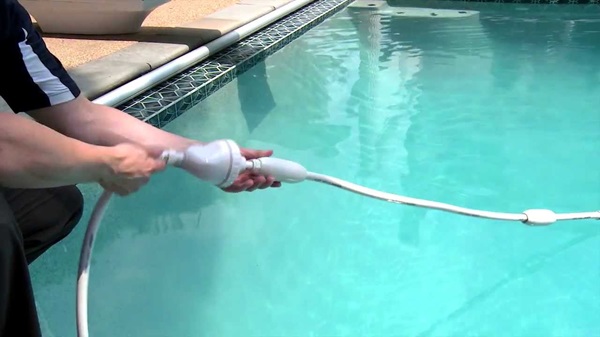
Decoding the Signals: When Is It Time to Call a Professional?
Persistent Hose Tangling: If you’ve tried adjusting hose length, swivel placement, and other DIY fixes but still experience frequent tangling, it may indicate underlying issues that require professional assessment.
Hose Damage or Leaks: Visible signs of hose damage, such as cracks, splits, or leaks, should be addressed promptly to prevent further deterioration and ensure proper function.
Pump or Filter Issues: If your pool pump or filter is experiencing problems that affect water flow or pressure, it can impact the performance of your pool vacuum hose and cleaner. A professional can diagnose and resolve these issues effectively.
Understanding Your Pool Pump and Filter’s Role in Hose Function
Proper water flow and pressure are crucial for the effective operation of your pool vacuum hose and cleaner. A malfunctioning pump or clogged filter can impede water circulation and suction, leading to hose tangling, poor cleaning performance, or equipment damage.
Regular maintenance and inspection of your pool pump and filter are essential for ensuring optimal function and preventing issues that may affect hose performance.
Local Pool Professional or DIY: Making the Right Choice for Hose Issues
DIY Troubleshooting: Simple hose maintenance tasks, such as adjusting length, checking swivel placement, and cleaning, can often be performed by pool owners themselves. DIY troubleshooting is suitable for minor issues or routine maintenance tasks.
Professional Assistance: If you encounter persistent hose tangling, significant damage, or issues with your pool pump or filter, it’s advisable to seek professional assistance. A qualified pool technician can diagnose the root cause of the problem and provide appropriate solutions to ensure the efficient and safe operation of your pool equipment.
Advanced Tips and Tricks for a Tangle-Free Pool Cleaner Experience
Achieving a tangle-free pool cleaner experience involves advanced tips and tricks, including customizing hose sections for complex pool shapes, adjusting pump suction for optimal hose performance, and utilizing innovative pool accessories.
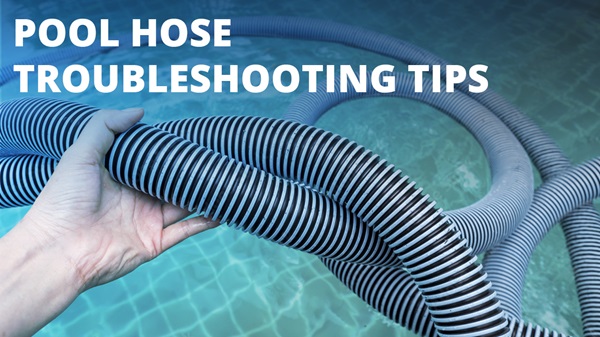
Customizing Hose Sections for Complex Pool Shapes
For pools with irregular shapes, customize hose sections to fit specific areas and reduce the risk of tangling. Use hose connectors or couplings to join multiple hose lengths and create a tailored cleaning route that navigates around obstacles and tight corners.
Measure the distance between the pool cleaner and the farthest point in your pool, then cut the hose to the appropriate length. Ensure each hose section is securely connected and maintains proper water flow to the cleaner.
How Adjusting Pump Suction Can Affect Hose Performance?
Fine-tune pump suction settings to optimize hose performance and minimize tangling. Increasing suction too much may cause the hose to become overly rigid and prone to kinking, while insufficient suction can result in poor cleaning efficiency.
Experiment with different suction levels to find the right balance that provides sufficient cleaning power without causing excessive hose movement or tangling. Monitor the hose during operation to ensure it remains straight and properly aligned.
Innovative Pool Accessories That Minimize Tangling
Invest in pool accessories designed to minimize hose tangling and improve cleaning efficiency. For example, consider using a hose swivel attachment that allows the hose to rotate freely, reducing twists and kinks that can lead to tangling.
Another option is a hose reel or caddy designed specifically for pool vacuum hoses. These accessories provide a convenient storage solution and help prevent hose memory, ensuring smooth unwinding and rewinding during use.
By customizing hose sections for complex pool shapes, adjusting pump suction for optimal performance, and utilizing innovative pool accessories, you can enjoy a tangle-free pool cleaner experience and maintain a sparkling clean pool with minimal effort. Experiment with different techniques and accessories to find the best combination for your specific pool layout and cleaning needs.

Meet David Thomas, a seasoned professional with nearly 8 years of experience specializing in inspecting and resolving issues related to swimming pools. With his expertise and meticulous attention to detail, David ensures the safety and functionality of pools, making them a refreshing oasis for all to enjoy. Whether it’s troubleshooting equipment or maintaining water quality, David’s proficiency guarantees top-notch solutions tailored to meet every pool owner’s needs.
